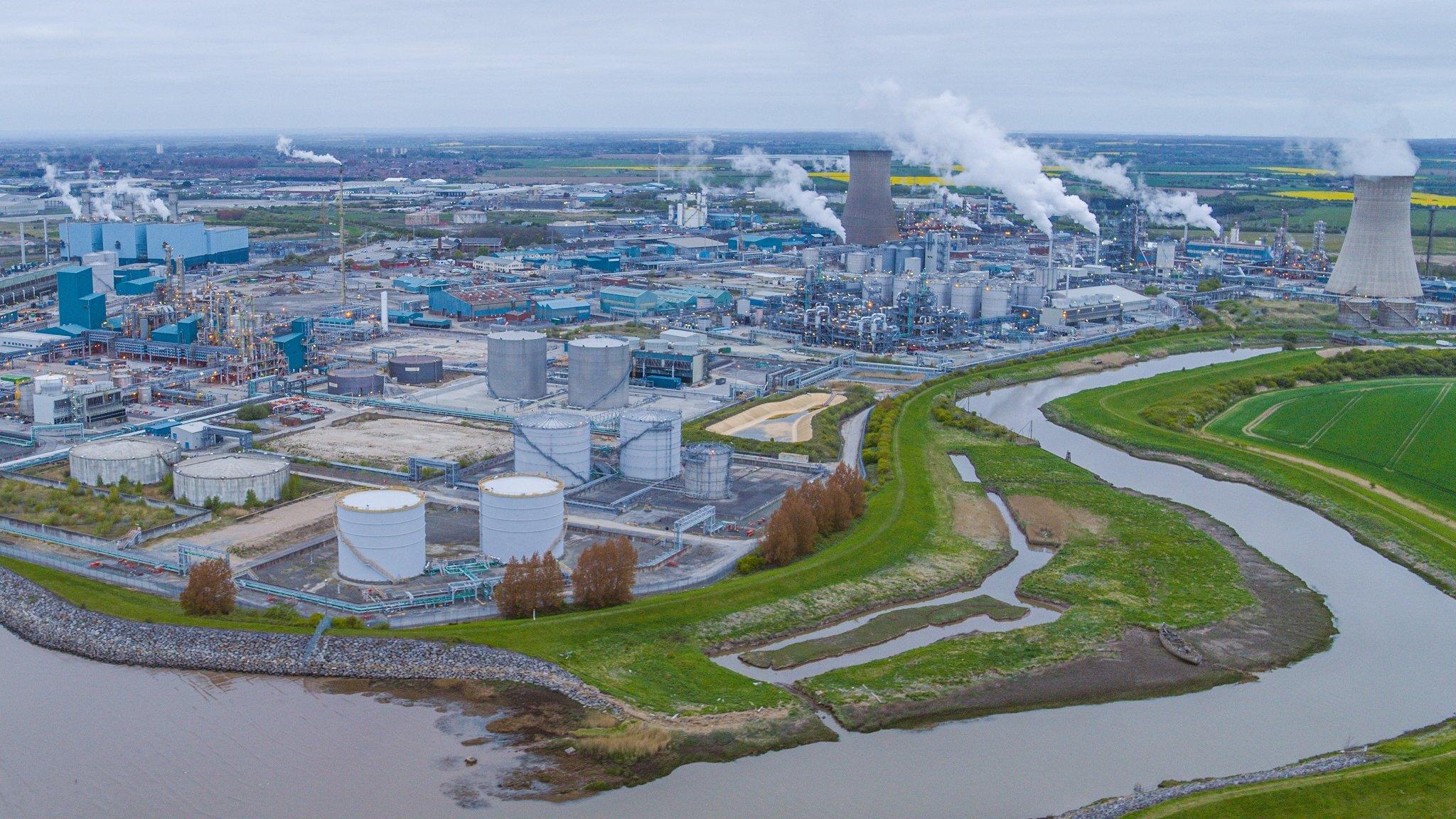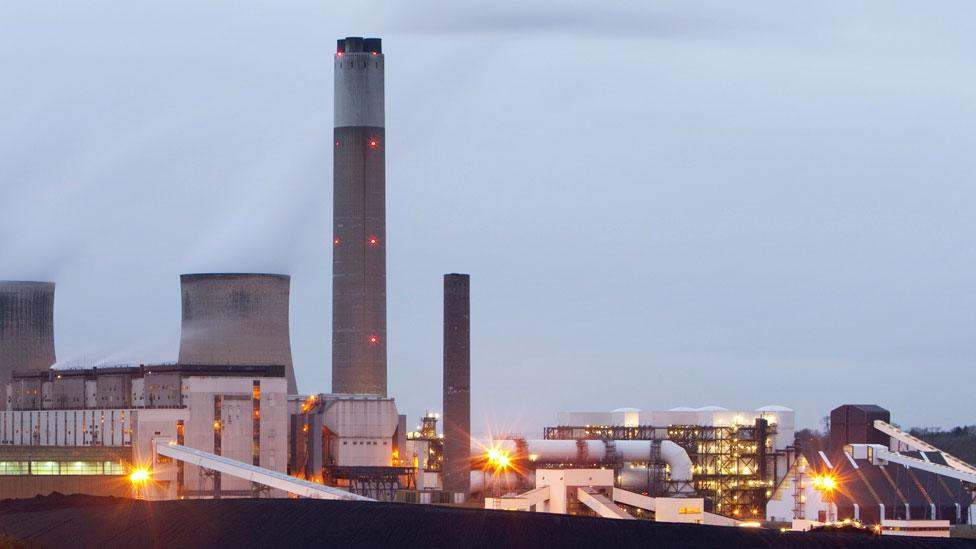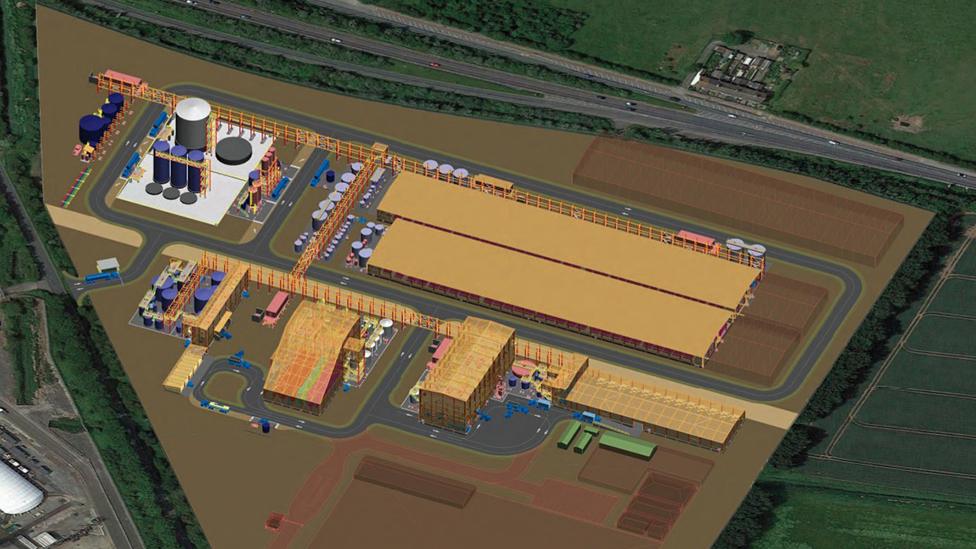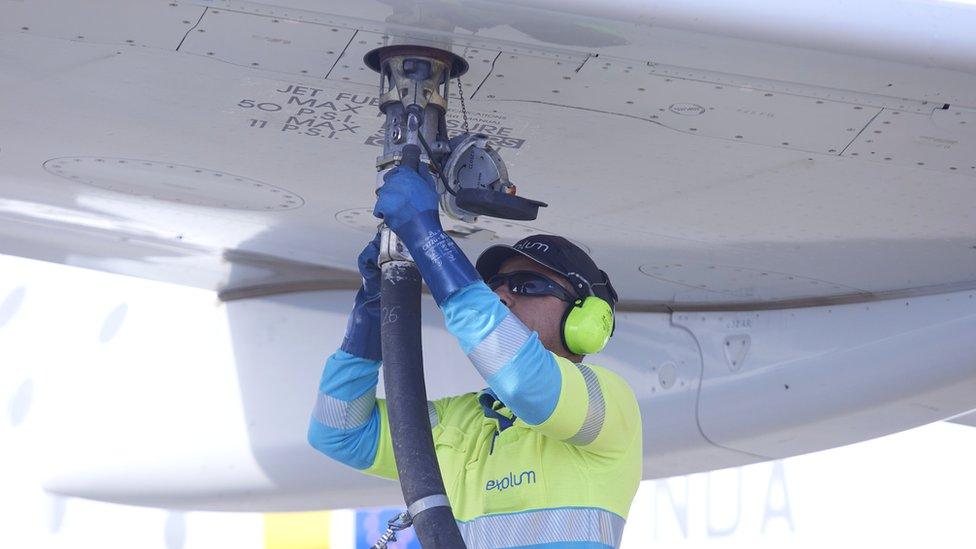Saltend: Hydrogen energy site given the green light
- Published

H2H Saltend will be built on the Saltend Chemicals Park
Plans for a hydrogen and carbon capture plant which could create thousands of jobs have been approved for a site in East Yorkshire.
Equinor, an energy company based in Norway, is behind the plans for "H2H Saltend".
The idea is to cut emissions at the Saltend Chemicals Park by up to a third - the equivalent of taking around 500,000 cars off the road.
It is understood work could begin by 2026 and create about 2,200 jobs.
The plant is being described as "one of the UK's key decarbonisation projects" according the Local Democracy Reporting Service (LDRS).
Under the plans a 600-megawatt, low-carbon hydrogen plant will be built at the existing energy park to the east of Hull.
The hydrogen produced will be used by companies on the park and directly replace natural gas in a number of industrial facilities.

The proposals aim to make the Humber net-zero by 2040
The site will also create a carbon capture and storage facility.
It's hoped almost 900,000 tonnes of CO2 will also be captured and sent for storage below the North Sea.
The Humber region produces about 12.4m tonnes of CO2 every year, and Saltend Chemicals Park produces roughly the same amount of emissions as the whole of Merseyside.
Equinor said: "These proposals aim to make the Humber, the UK's most carbon intensive industrial region, net-zero by 2040."
Cllr Anne Handley, the leader of East Riding of Yorkshire Council, said: "We welcome major energy projects from global companies like Equinor, which help to demonstrate the ability of our area to attract investment, leading to more jobs, supply chain contracts and opportunities for local people.
"We should be proud that East Yorkshire can be a leading light in the transition to a net zero economy."

Analysis - Paul Murphy Environment Correspondent
The Humber is one of the most polluting regions in the UK, producing vast amounts of harmful greenhouse gases.
The Saltend hydrogen project is one of several schemes across the region attempting to clean-up this industrial cluster, as the UK strives to phase-out fossil fuels on its journey towards "net zero" carbon emissions.
Hydrogen is seen as a significant fuel of the future because its combustion - perhaps in power stations, buses or cars - produces water, rather than CO2. However water vapour is still a known greenhouse gas.
Some projects use wind turbines to produce so-called green hydrogen. The Saltend project will use natural gas to make a product often referred to as blue hydrogen. But the process of making blue hydrogen produces large quantities of harmful C02.
The plan at Saltend is to capture this CO2 and store it in caverns under the North Sea.
But carbon capture and storage is a controversial form of technology with environmental campaign groups raising concerns about its cost and effectiveness at scale.

What happens next?
H2H Saltend could also form part of an "East Coast Cluster" carbon capture transport and storage network.
Pipelines would run from Easington in the East Riding and across northern Lincolnshire, including to a carbon capture power station at Keadby.
Pipelines would also run to Drax power station, near Selby, and transfer CO2 out for sub-sea storage.
Equinor said that "will help to establish East Yorkshire as a leading light in the transition to a net zero economy."

Follow BBC East Yorkshire and Lincolnshire on Facebook, external, X (formerly Twitter), external, and Instagram, external. Send your story ideas to eastyorkslincs.news@bbc.co.uk, external
Related topics
- Published11 December 2023

- Published22 July 2022

- Published24 November 2023
